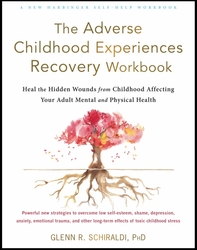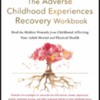“Live a good, honorable life. Then when you get older, and think back, you’ll be able to enjoy it a second time.” (Dalai Lama)
So far in this series on healing and rewiring inner wounds from adverse childhood experiences (ACEs), we have explored ways to:
- Regulate stress arousal that is stuck on too high or too low so that the brain can function properly
- Regulate strong, distressing emotions, which maintain dysregulated stress arousal
- Optimize brain health and function to improve mood and prepare the brain to rewire in constructive ways
- Stabilize and strengthen the nervous system through imagery that simulates experiences that were needed developmentally
- Soothe and settle distressing experiences in the present and the disturbing childhood memories that they trigger
- Rewire residual shame from childhood
Once the hidden wounds from ACEs have been managed, we can turn attention to flourishing—increasing happiness, inner peace, life satisfaction, and the like. The good news is that there are many effective ways to thrive after a difficult childhood. This post focuses on growing inner peace and self-respect.
The Honorable Life
The renowned psychologist Abraham Maslow said it so well: violating species-virtues (those character strengths that are prized around the world and across time), inevitably registers beneath conscious awareness to our discredit—for example, as shame, guilt, or self-loathing. Conversely, living those strengths, which reflect our highest nature and potential, registers to our credit. (See Maslow, 1968, for actual quote.) Or, as one humble, approachable military leader said, “What matters most in the twilight years is having lived an honorable life.”
Flourishing starts with cultivating a wholesome sense of self-respect, a quiet inner gladness to be who we are. We’ve discussed how painful shame can be imprinted in the earliest years by mistreatment and attachment disruptions, registering as a felt sense of unworthiness, inadequacy, or self-loathing. This shame is not the child’s fault. It can be rewired through strategies we’ve previously discussed. However, if this painful shame is not resolved, that pain can manifest later in life as excessive anger, drug use, or other behaviors that hurt ourselves and others. These behaviors can result in more shame—this time it is self-inflicted shame that we wittingly or unwittingly cause by our destructive behaviors.
Ideally, we’d only choose behaviors that elevate ourselves and others, and we’d avoid behaviors that cause self-inflicted shame. But mortals are imperfect; we all stumble at times and cause regrets. However, the pain from our misguided decisions is not wasted if it teaches us to turn to our higher nature and potential. Even distressing experiences can benefit us if they lead us to seek better ways to cope with our pain and meet our needs; if we resolve to never again harm ourselves or others by our distressing choices. In short, we can commit to a course of greater wisdom, inner peace and self-respect.
An interesting Dutch study found that post-traumatic stress symptoms were predicted by how people viewed themselves. Those who were satisfied with the kind of person they were—who viewed themselves as decent, moral, and possessing good character— had fewer trauma symptoms (van Bruggen et al., 2018).
How, then, can we come to peace with past mistakes and cultivate character strengths that build inner peace and self-respect? (Find complete scripts and worksheets at Schiraldi, 2021.)
Gain Compassionate Understanding
Start by taking a look at past behaviors that have harmed you or others. Do so in a kind, accepting, non-judgmental way, seeking to understand what motivated your old behaviors and how those behaviors didn’t really serve you. For example, perhaps you reacted to a loved one’s criticism with explosive anger. Upon reflection you realize that the criticism triggered feelings of shame and inadequacy, and you hadn’t mastered the skills needed to deal with that pain in another way. Perhaps drugs were used to cover that pain and feel the happiness you didn’t know how to attain in more satisfying ways.
Everyone wants to avoid suffering and be happy. Perhaps you can now consider newly learned ways to meet those legitimate needs. For example, you might soothe emotional pain with mindfulness and self-compassion strategies. You can’t change your history, but you can reach the point where you can look back and think, “Yes, I’ve made mistakes, but I’ve learned from them and am trying my best now to live a good life.”
Integrity Meditation
In a quiet setting, simply reflect on this question: “Is there anything that I now do that is ruining my reputation with myself; anything that disturbs my inner peace or leads me or others to distrust me?” Kindly and without judgment, just notice what comes up. Notice where in your body you sense what comes up. Breathe compassion into that area.
Fearless, Searching, Loving Moral Inventory
Patterned after the Alcoholics Anonymous moral inventory, this inventory asks you to consider how you presently stand with regard to the character strengths that are valued in nearly all cultures, such as fairness, respect, kindness, honesty, trustworthiness, dependability, courage, sexual integrity, and humility. Rate each character strength from 0 to 10 with regard to how well each is presently developed. You’ll undoubtedly see neither zeros nor tens, but a unique pattern of character development. Remind yourself that ascent is difficult, that growing character is a lifelong process, and that everyone who strives to be good does so imperfectly. Recall times in the past when you demonstrated each character strength to any degree. Giving yourself credit for past successes motivates future growth. Finally, describe what you could do to demonstrate this strength even more in the future. (Gallup research has shown that people progress much more by focusing on building strengths than by fixing weaknesses.
Grow Character Strengths One at a Time
Pick one character strength that you’d like to grow. A good way to gain momentum is to start with one of your strongest traits. Consider how your life would be better as a consequence of living this strength more fully. Then make and carry out a reasonable, achievable plan to grow this strength. For example, you might practice greater honesty by speaking the truth—no white lies—for one day. (This is not a trivial goal, as most people speak several untruths each day. One can be tactful and honest when truthful feedback is requested, or remain silent rather than speak untruthfully.) When you’re satisfied with your progress, repeat the process with other character strengths.
Be Kind and Forgiving
As we’ve previously discussed, self-compassion (including forgiveness) is much more motivating for improving than harsh self-criticism. The next post will explore how the powerful skill of forgiveness is cultivated.
Glenn R. Schiraldi, Ph.D. Psychology Today blog post, September 12, 2022. This post is part of a series on adverse childhood experiences. Read the other parts here.
References
Schiraldi, G. R. (2021). The Adverse Childhood Experiences Recovery Workbook. Oakland, CA: New Harbinger Publications. (Scripts for flourishing)
Maslow, A. (1968). Toward a Psychology of Being, 2nd ed. New York: Van Nostrand Reinhold.
van Bruggen, V., ten Klooster, P. M., van der Aa, N., Smith, A. J. M., Westerhof, G. J., & Glas, G. (2018). Structural Validity of the World Assumption Scale. Journal of Traumatic Stress 31: 816–825.
About the Author
Glenn R. Schiraldi, PhD, has served on the stress management faculties at The Pentagon, the International Critical Incident Stress Foundation, and the University of Maryland, where he received the Outstanding Teacher Award in addition to other teaching/service awards. His fourteen books on stress-related topics have been translated into seventeen languages, and include The Adverse Childhood Experiences Recovery Workbook, The Self-Esteem Workbook. The Resilience Workbook, and The Post-Traumatic Stress Disorder Sourcebook. The founder of Resilience Training International (www.ResilienceFirst.com), he has trained laypersons, emergency responders, and clinicians around the world on the diverse aspects of stress, trauma, and resilience.
Photo credit: NADOFOTOS/istockphoto.com




Comments (3)